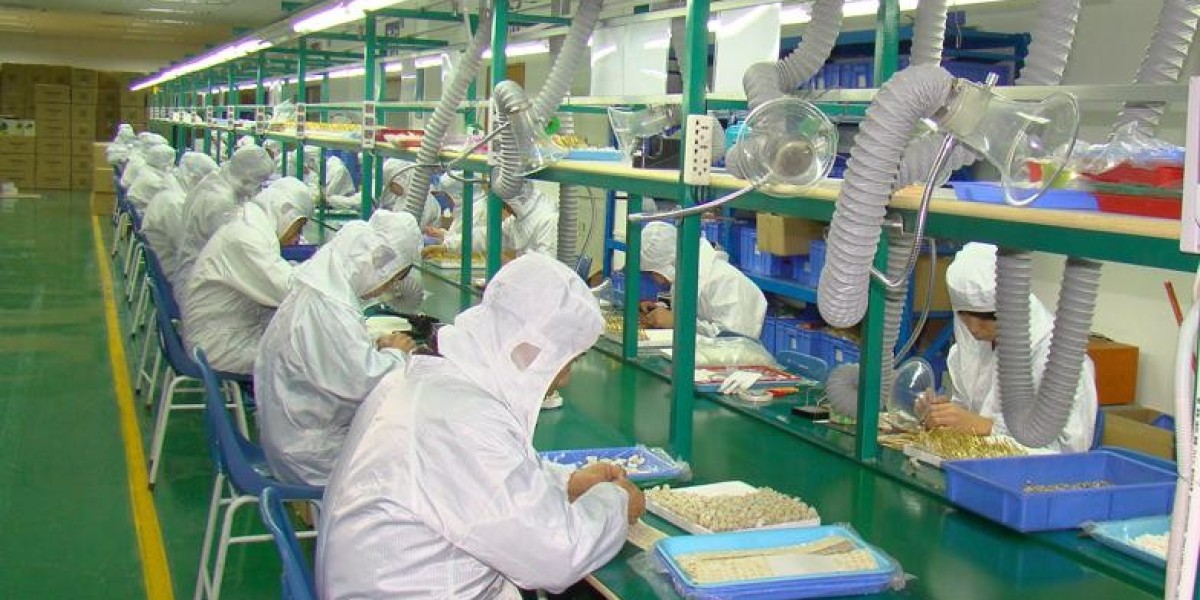Injection molding is one of the most common and important manufacturing processes for producing plastic parts and products at scale. The quality, efficiency, and cost-effectiveness of injection molding depend heavily on the design of the mold. Proper mold design is crucial for achieving dimensionally accurate parts, reducing defects, optimizing cycle times, and lowering overall production costs. Mastering strategic mold design can lead to improved product quality, enhanced productivity, and greater manufacturing success.
This comprehensive guide covers the essential elements and best practices of effective mold design for injection molding. It provides key insights and strategies for optimizing mold geometry, materials selection, cooling systems, tolerances, surface finishes, and other critical factors that influence injection molding outcomes. By following these injection molding mold design principles and techniques, manufacturers can gain a competitive edge.
Fundamentals of Injection Mold Design
The injection mold is composed of two primary components - the cavity side (usually the female section) and the core side (usually the male section). When closed together, these two halves create the mold cavity that forms the shape of the desired plastic part. The key aspects of mold design include:
- Mold base and platens - Made from high strength steel, they provide structural support and house the mold components.
- Cavity and core inserts - Often made of hardened tool steels, they are machined to form the features of the part and withstand injection pressures.
- Cooling channels - Drilled into the core and cavity, they allow cooling fluid to extract heat and solidify the melted plastic.
- Ejection system - Consisting of ejector pins, sleeves, and plates, it pushes the finished part out of the opened mold.
- Clamping system - Applies force to keep mold closed against injection pressures during the molding cycle.
- Components like gates, runners, vents, slides, and lifters may also be incorporated according to part requirements.
Optimizing Mold Geometry
The mold geometry must be designed to facilitate proper flow of the molten plastic, adequate packing, uniform cooling, and easy part ejection. Key factors to consider include:
- Parting lines - Avoid locating them on visible finished surfaces. Use multiple parting lines if needed.
- Draft angles - Incorporate draft of 1-2° on vertical surfaces for easy demolding.
- Fillet radii - Add fillets/blends at sharp corners to reduce stress concentrations.
- Gate location - Position near the thickest section to allow sequential filling.
- Runner and cooling channel layout - Design for balanced melt flow and cooling.
- Undercuts and side actions - Strategically incorporate to enable complex geometries.
- Textures and surface finishes - Add them on the cavity side for replication on the parts.
- Parting line locks - Use minimally to avoid defects on visible surfaces.
China has become a dominant force in injection mold design and manufacturing. Chinese mold makers have mastered strategies to create high quality, cost-effective molds. They excel at combining creativity, precision machining, and automation to deliver exceptional mold design capabilities. Utilizing Chinese partners allows leveraging world-class expertise at competitive prices for injection molding success.
Selecting Appropriate Mold Materials
The materials used for constructing the mold must be selected appropriately based on factors like strength, hardness, machining ease, polishing ability, heat conductivity, corrosion resistance, and cost. Common materials include:
- P20 Steel - Versatile and economical, it makes a good choice for low to moderate production molds. It has 25-30 HRc hardness.
- Stainless Steel - Resistant to corrosion and wear, it is easier to maintain surface finishes but conducts heat poorly.
- Aluminum - Lightweight and machinable, it is typically used for prototype molds but lacks durability.
- Beryllium copper alloy - With good conductivity and polishability, it works well for complex details and finishes but is expensive.
- Tool steels like H13, S7, 420, etc. - Harder steel types used for cavity inserts, they provide good wear resistance for high production molds.
- Exotics like carbides, ceramics, nano-structured alloys - Used where extremely high hardness or toughness is needed despite higher costs.
Properly choosing mold materials based on unique needs and production requirements is key to cost-effective long-term mold performance. Partnering with experienced injection mold makers helps select the optimal combination.
Incorporating Effective Cooling Design
The cooling system is one of the most critical elements of injection mold design. It must rapidly extract heat from the molten plastic to control solidification, prevent defects like warpage and sink marks, and reduce cycle times. Strategic cooling channel design involves:
- Optimized layout - Run channels close to cavity surfaces with minimal crossovers. Parallel design flows fastest.
- Generous sizing - 10-15mm diameter provides turbulent high flowrate cooling. Avoid sharp corners.
- Conformal channels - Follow cavity geometry and put channels within 5mm of hot spots.
- Strategic vents and plugs - Prevent steam locks while allowing access for cleaning.
- Independent control - Use multiple cooling circuits for targeted cooling.
- High conductivity materials - Beryllium copper alloy or carbon-filled polymers transfer heat efficiently from the mold.
- Conformal baffles - Direct and turbulent flow against cavity surfaces for maximum heat transfer.
- Pressurized systems - Boost flow rate and heat transfer by pressurizing channels.
- Pulsed flow - Alternate flow directions to break boundary layers and improve heat transfer.
China offers advanced manufacturing capabilities to fabricate complex conformal cooling channel designs that would be impossible or uneconomical to machine. Partnering with leading Chinese mold makers provides access to the latest cooling technologies.
Achieving Proper Dimensional Tolerances
Stringent dimensional tolerances and repeatability are required in most injection molded components. The mold must be precision machined and finished to obtain accurate plastic parts consistently within specified tolerances. Some key strategies include:
- Generous stock removal - Leave at least 0.5mm extra stock before final finishing to minimize distortion effects.
- Benchwork and hand scraping - May be needed along with machining to meet tightest tolerances.
- Matching cavity and core - Prevent tolerance stack-up by matching the halves.
- Uniform shrinkage - Balance wall thicknesses to avoid uneven shrinkage.
- Computer-aided manufacturing - CNC machining and Electrical Discharge Machining (EDM) enable high precision.
- Component stability - Use risers, ribs, and ejector damping to minimize dynamic deflection.
- Dimensional validation - Thoroughly measure and validate mold dimensions before production.
- Robust clamping - Prevents opening and helps maintain tolerance under pressure.
- Mold maintenance - Monitor and maintain mold to control wear and erosion effects.
Chinese mold makers employ advanced software and machining to hit even the most stringent plastic part tolerances required by global OEM customers.
Optimizing Surface Finishes
The surface finish quality on the mold cavity directly affects the finish on the plastic part. A smooth mold surface is needed to produce glossy, aesthetic parts. Key tactics for optimizing mold surface finishes include:
- Polished mold materials - Choose easy to polish steels or copper alloys. Avoid porous materials.
- Diamond machining - Machine cavities and cores with polycrystalline diamond (PCD) cutters.
- Wire EDM - A spark erosion process that leaves a fine surface finish.
- Micro-milling - Finish mill delicate details with small end mills.
- Manual polishing - Hand polish with progressively finer grits if needed.
- Gas nitriding - A surface hardening treatment that minimizes wear and erosion.
- Mold coatings - Apply PVD or CVD coatings like titanium nitride to enhance hardness and longevity.
- Mold flow optimization - Ensures adequate packing pressure for good replication.
- Draft angles - Allow complete demolding without damaging surface finish.
Many Chinese mold makers utilize advanced technology like PCD machining to consistently achieve exceptional surface finishes meeting even the strictest requirements.
Minimizing Part Defects
Defects like short shots, sink marks, voids, warpage, and flash ruin part quality and result in rejects. Strategic mold design is key to minimizing such defects by:
- Optimized gate design - Large gates placed at thick sections avoid short shots.
- Generous radii - Eliminate sharp corners to avoid stress concentrations.
- Uniform wall thickness - Maintains uniform cooling and packing to prevent sinks and voids.
- Ribs and gussets - Strategically strengthen parts and control warpage.
- Proper venting - Allows air evacuation while blocking plastic overflow.
- Cooling line placement - Avoid cooling channels breaking through cavity surfaces.
- Draft angles - Facilitate demolding without deforming part surfaces.
- Ejection strategy - Stage ejection sequence and forces to prevent distortion.
- Dimensional validation - Verify critical mold dimensions to prevent flash defects.
Partnering with experienced Chinese mold makers allows tapping into deep expertise in minimizing part defects through design optimization.
Conclusion
Injection mold design has a profound impact on plastic part quality, manufacturing costs, and production efficiency. Following fundamental design principles and best practices is key to creating high-performance molds that reliably produce dimensionally accurate, defect-free parts at the lowest possible cost. Mastering critical factors like geometry, materials selection, cooling, tolerances, and surface finishes enables mold designs that lead to injection molding success. Tapping into leading Chinese capabilities provides access to advanced mold design expertise that gives a competitive advantage. With strategic injection molding mold design, manufacturers can achieve higher productivity, improved quality, and greater profitability.







